 |
H |
 |
|
|
|
|
|
|
|
|
|
|
|
|
|
|
|
|
|
|
|
|
|
| |
|
|
|
|
|
|
|
|
|
|
|
|
|
|
|
|
|
|
| |
|
The
History of Oxygen |
|
| |
|
|
|
|
|
|
|
|
|
|
|
|
|
|
|
|
|
|
| |
|
So,
how did it get this way? |
|
Hewitt's Air
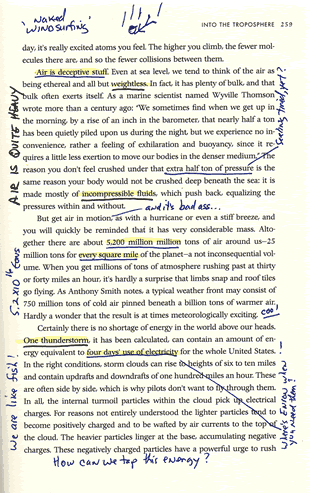 |
|
| |
|
|
|
|
|
|
|
|
|
|
|
|
| |
|
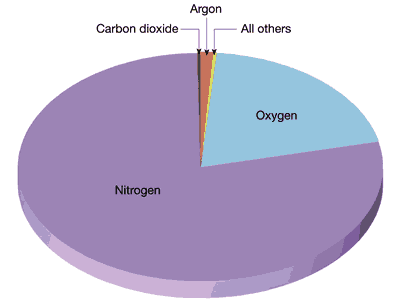 |
|
|
| |
|
|
|
|
|
|
|
|
|
|
|
|
| |
|
Oxygen
is one of the 'master variables'
of the Earth System. |
|
|
|
|
|
|
|
|
|
|
|
|
|
|
|
|
|
|
|
|
|
|
|
Rothschild
and Lister
 
|
|
|
|
|
|
|
The
History
of
Oxygen |
|
|
|
|
|
|
|
|
|
|
|
|
|
|
|
|
|
|
|
|
|
|
|
|
|
|
| |
|
 |
|
| |
|
|
|
|
|
|
|
|
|
|
|
|
|
|
|
|
|
|
|
|
 |
|
Origin of Atmospheric
Oxygen
Free
oxygen is never more than a trace component of most planetary atmospheres.
Thermodynamically, oxygen is much happier
when combined with other elements as oxides; the pressure
of O2 in equilibrium with basaltic magmas is only
about a ten millionth of an atmosphere. Photochemical
decomposition of gaseous oxides in the upper atmosphere is the major source
of O2 on most planets.
On Venus, for example, CO2 is broken down into CO
and O2. On the earth, the major inorganic source of
O2 is the photolysis of water vapor;
most of the resulting hydrogen escapes into space, allowing the O2
concentration to build up. An estimated 20 billion grams of O2
per year is generated in this way. Integrated over the earth’s history,
this amounts to less than 3% of the present oxygen abundance. The partial
pressure of O2 in the prebiotic atmosphere
is estimated to be no more than 0.001 atm, and may have been several orders
of magnitude less. |
|
|
|
The
major source of atmospheric oxygen on the earth
is
photosynthesis
carried out by green plants and certain
bacteria. |
|
|
|
|
|
|
|
|
|
|
|
|
|
|
|
|
|
|
|
|
|
|
 |
|
|
|
|
|
|
|
|
|
|
|
|
|
|
|
|
|
|
|
|
|
|
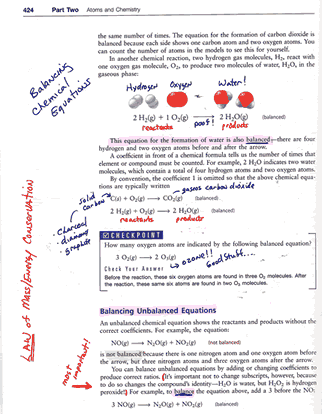 |
|
Chemical
Reactions |
|
|
|
|
|
|
|
|
|
|
|
|
|
|
|
|
|
|
Law
of Conservation of Mass/Energy
matter is neither created
or lost
in any chemical reaction.
|
|
|
|
|
|
|
|
|
|
|
|
|
|
|
|
|
|
|
|
|
|
Rothschild
and Lister
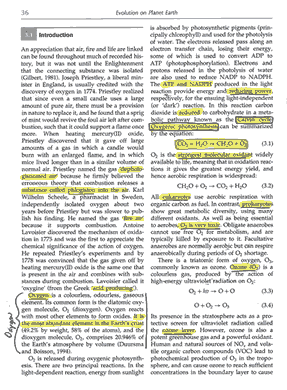 |
|
|
|
|
|
|
|
|
|
|
|
|
|
|
|
|
|
|
|
|
|
|
|
|
|
|
|
|
|
|
|
|
|
|
|
|
The
Atmosphere |
|
|
|
|
|
|
|
|
|
|
|
|
|
|
|
|
|
|
|
|
|
|
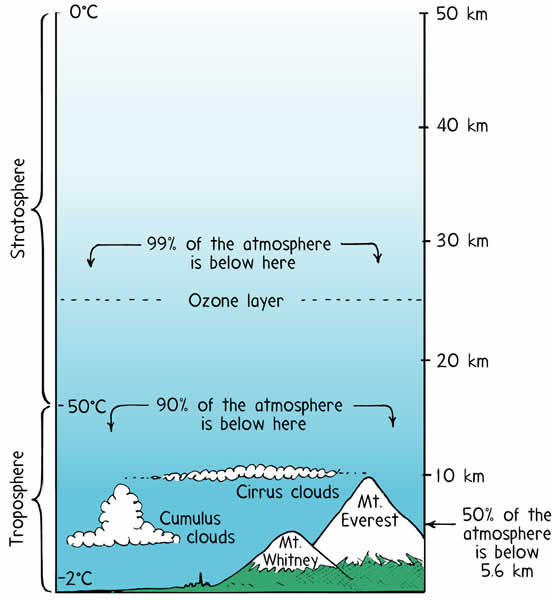 |
Temperature
is rising. . . |
|
|
|
|
 |
|
|
|
|
|
|
|
|
|
|
|
|
|
|
|
|
|
|
|
|
|
|
|
|
|
|
|
|
|
|
|
 |
|
|
|
|
|
|
|
|
|
|
|
|
|
|
|
|
|
|
|
|
|
|
How
do we know that the
atmospheric build-up of greenhouse gases
is due to human activity? |
|
|
|
|
|
|
|
|
|
|
|
|
|
|
|
|
|
|
|
|
|
|
|
|
First,
the nuclei of carbon atoms in carbon dioxide emitted by
burning coal, oil, and natural gas (fossil fuels) differ in their characteristics
from the nuclei of carbon atoms in carbon dioxide emitted under natural
conditions. Coal, oil, and natural gas were formed deep underground tens
of millions of years ago, and the fraction of their nuclei that were once
radioactive has long ago changed to non-radioactive
carbon. But the carbon dioxide emitted from natural sources
on the Earth's surface retains a measurable radioactive
portion. As carbon dioxide has been emitted through fossil
fuel combustion, the radioactive fraction of carbon in the atmosphere
has decreased. Forty years ago scientists provided the first direct
evidence that combustion of fossil fuels was causing a buildup of carbon
dioxide and thereby diluting radioactive carbon in the atmosphere by measuring
the decreasing fraction of radioactive carbon-14 captured in tree
rings, each year between 1800 and 1950. |
|
|
|
|
|
|
|
|
|
|
|
|
|
|
|
|
|
|
|
|
|
|
|
|
Charles
Keeling Curve
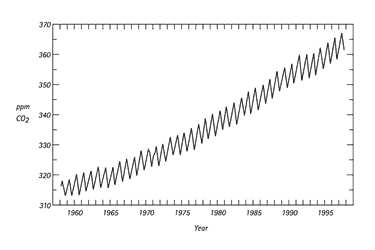 |
|
|
Second,
scientists began making precise measurements of the total amount
of carbon dioxide in the atmosphere at Mauna Loa, Hawaii, and at
the South Pole in the late 1950s. They have since expanded their observations
to many other locations. Their data show convincingly that the levels
of carbon dioxide have increased each year worldwide. Furthermore,
these increases are consistent with other estimates of the rise of carbon
dioxide emissions due to human activity over this period. |
|
|
|
|
|
|
|
|
|
|
|
|
|
|
|
|
|
|
|
|
|
|
|
|
|
Third,
ice buried below the surface of the Greenland and Antarctic ice
caps contains bubbles of air trapped
when the ice originally formed. These samples of fossil air, some of them
over 200,000 years old, have been retrieved by drilling deep into the ice.
Measurements from the youngest and most shallow segments of the ice cores,
which contain air from only a few decades ago, produce carbon dioxide concentrations
nearly identical to those that were measured directly in the atmosphere
at the time the ice formed. But the older parts of the cores show that carbon
dioxide amounts were about 25% lower than today for the ten thousand years
previous to the onset of industrialization, and over that
period changed little. |
|
|
|
|
|
|
|
|
|
|
|
|
|
|
|
|
|
|
|
|
|
|
|
|
|
|
|
|
Fourth,
evidence comes from the geographic pattern of carbon dioxide
measured in air. Observations show that there is slightly more carbon
dioxide in the northern hemisphere than in the southern hemisphere. The
difference arises because most of the human activities that produce carbon
dioxide are in the north and it takes about a year for northern hemispheric
emissions to circulate through the atmosphere and reach southern latitudes.
|
|
|
|
|
No
matter where you stand on the global warming issue, one particular conclusion
from these data is irresistible: Carbon dioxide
levels in the atmosphere have increased over 15 percent since 1958.
This "modern" database can be combined with studies of CO2 trapped
in polar ice cores, where CO2 concentrations are literally frozen in time.
The data suggest that although concentrations ranged widely during 400,000
years of ice core record, the recent high levels of atmospheric CO2 are
unprecedented. |
|
|
|
|
|
|
|
|
|
|
|
|
|
|
|
|
|
|
|
|
|
|
|
|
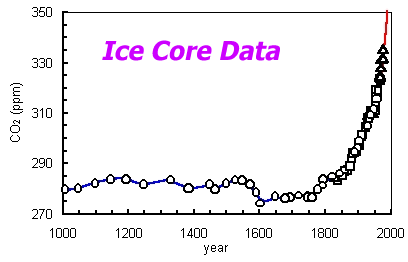 |
|
|
|
|
|
|
|
|
|
|
|
|
|
|
Natural
Thermometers |
|
|
|
|
|
|
|
|
|
|
|
|
|
|
|
|
|
|
|
|
|
|
|
|
|
|
|
|
|
|
|
|
|
|
|
|
One of these
thermometers is extremely common - it's trees, or more precisely,
tree rings. These rings show how much
a tree has grown each year, with each ring representing one year. In
warmer, wetter years, the tree will grow more so the ring for that year
will be wider than the ring for a colder year. By studying the
rings, scientists can learn about the changes in weather over the tree's
lifetime.
Just like trees, coral
also builds up rings as it grows, but instead of being made
of wood these growth rings are made of calcium carbonate - the hard white
stuff that forms the 'skeleton' of a coral. Each year, the coral grows a
little bit more. If the sea temperature is warm the coral will grow
faster than if the temperature is cold, so warmer years will make wider
growth rings and colder years will create thinner rings. By looking
at these rings we can get an idea of what the sea, and therefore the surface
temperatures, were like each year. |
|
|
|
|
|
|
|
|
|
|
|
|
|
|
|
|
|
|
|
|
|
|
|
PaleoClimatology |
|
|
|
|
|
|
|
|
|
|
|
|
|
|
|
|
|
|
|
|
|
|
NOAA |
|
|
|
|
|
|
|
|
|
|
|
|
|
|
|
|
|
 |
|
|
|
|
|
|
|
|
|
|
|
|
|
|
|
|
|
|
|
|
|
|
|
|
|
|














